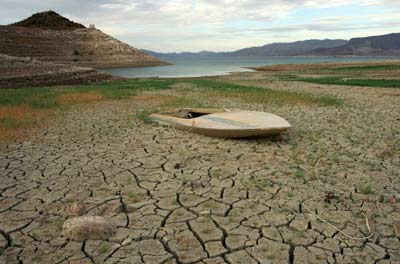Water is becoming an increasingly important issue in the developed world. But this issue is nothing new for other, less developed nations. For centuries, clean drinking water has been hard to come by for many populations, especially the poor. In some areas, water may be available, but it’s often disease-ridden, and drinking it can be fatal. In other areas, a viable water supply is simply not available at all.
A 2006 United Nations report estimated that as much as 20 percent of the world’s population doesn’t have access to clean drinking water [source: BBC]. This leads us to wonder: If we need it so badly, why can’t we just make it?
Water is made of two hydrogen atoms attached to an oxygen atom. This seems like pretty basic chemistry, so why don’t we just smash them together and solve the world’s water ills? Theoretically, this is possible, but it would be an extremely dangerous process, too.
To create water, oxygen and hydrogen atoms must be present. Mixing them together doesn’t help; you’re still left with just separate hydrogen and oxygen atoms. The orbits of each atom’s electrons must become linked, and to do that we must have a sudden burst of energy to get these shy things to hook up.
Since hydrogen is extremely flammable and oxygen supports combustion, it wouldn’t take much to create this force. Pretty much all we need is a spark — not even a flame — and boom! We’ve got water. The hydrogen and oxygen atoms’ electrons’ orbits have been conjoined.
But we also have an explosion and — if our experiment was big enough, a deadly one. The ill-fated blimp, the Hindenburg, was filled with hydrogen to keep it afloat. As it approached New Jersey on May 6, 1937, to land after a trans-Atlantic voyage, static electricity (or an act of sabotage, according to some) caused the hydrogen to spark. When mixed with the ambient oxygen in the air, the hydrogen exploded, enveloping the Hindenburg in a ball of fire that completely destroyed the ship within half a minute.
There was, however, also a lot of water created by this explosion.
To create enough drinking water to sustain the global population, a very dangerous and incredibly large-scale process would be required. Still, over a century ago the thought of an internal combustion engine — with its controlled repeated explosions — seemed dangerously mad. And as water becomes scarcer, the process of joining hydrogen atoms to oxygen atoms may become more attractive than it is currently. Necessity, after all, is the mother of invention.
But there are safer ways of creating water out of thin air, and projects to do just that are already underway.
Source: https://science.howstuffworks.com/
Dear User/Visitor! Please, answer on our questions: tick off one of the positions – your answer will make us able to improve our site and make it more interesting and useful!


